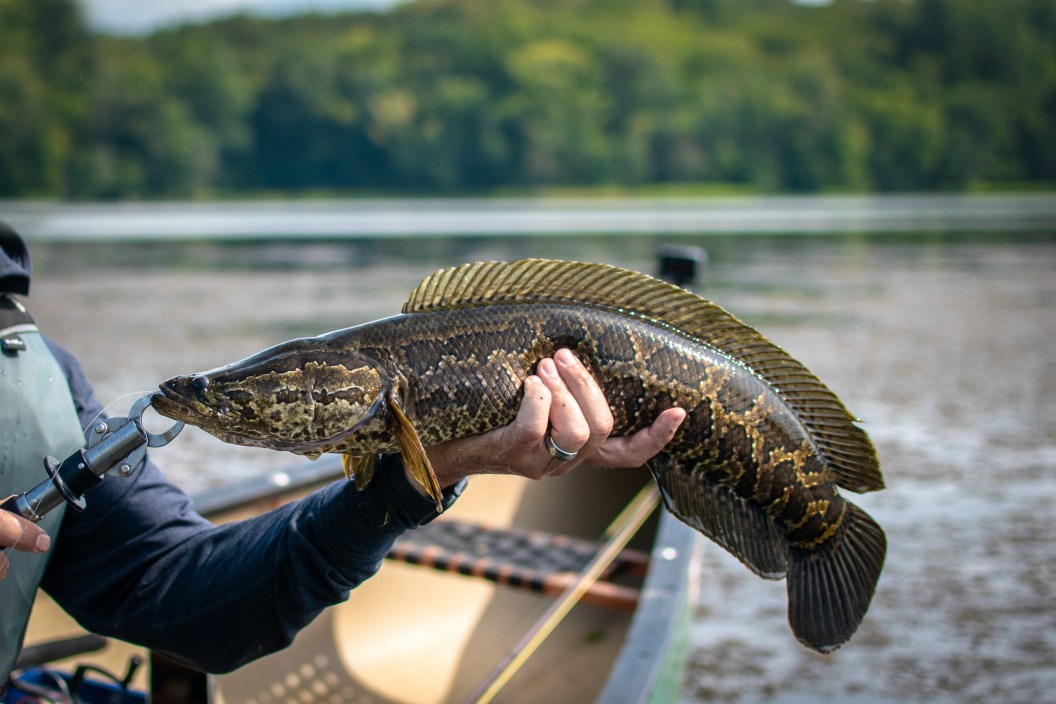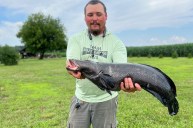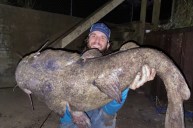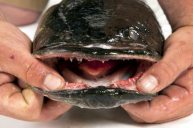A slithery, slippery, eel-like fish with a snake's face that can leap from the water and wriggle its body across land to new watering holes. It's not from an '80s horror movie. It's the invasive northern snakehead fish—and it's showing up all across the country.
The northern snakehead fish, native to temperate East Asia, was first discovered in the United States in Maryland in 2002. It is believed to have been transported there for either for fish market sales or residential aquariums but then was released into the wild. For the past 20 years, sightings have been reported in several states including New York, Missouri, Pennsylvania, New Jersey, California, Delaware, Florida, Georgia, Hawaii, Maine, Maryland, Massachusetts, Arkansas, Virginia, and Rhode Island, according to the U.S. Environmental Protection Agency.
Northern snakeheads are fish, not amphibians. And yet they can breathe air and exist outside of water for up to four days, long enough to migrate from one body of water to the next. Talk about invasive—they can literally introduce themselves, without human intervention, into new and yet-undisrupted native habitats.
What makes this possible are the snakehead's supra-branchial organs, which give them that incredible ability to breathe air. As long as they have a little mud to keep themselves moist, snakeheads are good to go, slinking and squirming their way to new waters.
Frankenfish
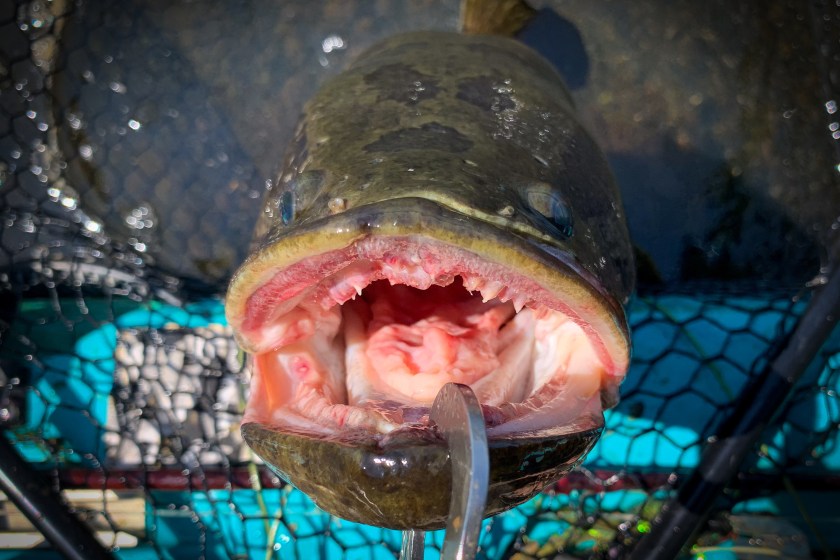
Getty Images, Greggory DiSalvo
In the "Animal Planet" TV series "River Monsters," northern snakeheads are described as "the fish from hell" and depicted as stalking an unsuspecting baby and a Chihuahua. While that dramatization is far from reality, the truth is that they offer no real benefit to the environments they permeate. The snakehead disrupts native ecosystems and the natural aquatic feeding structure. They cause substantial ecological damage because, in many areas to which they are not native, the absence of natural enemies gives them apex predator status over most native fish. Each spawning-age female can release up to 15,000 eggs at once, and snakeheads can mate as often as five times a year once they reach maturity. This means in just two years, a single female can release up to 150,000 eggs.
With one look, it's easy to see where the name "snakehead" comes from. The fish has a long, cylindrical body and large scales, giving it a snake-like appearance. They have long dorsal fins, large mouths, and distinctive sharp and shiny teeth.
World Record Snakehead
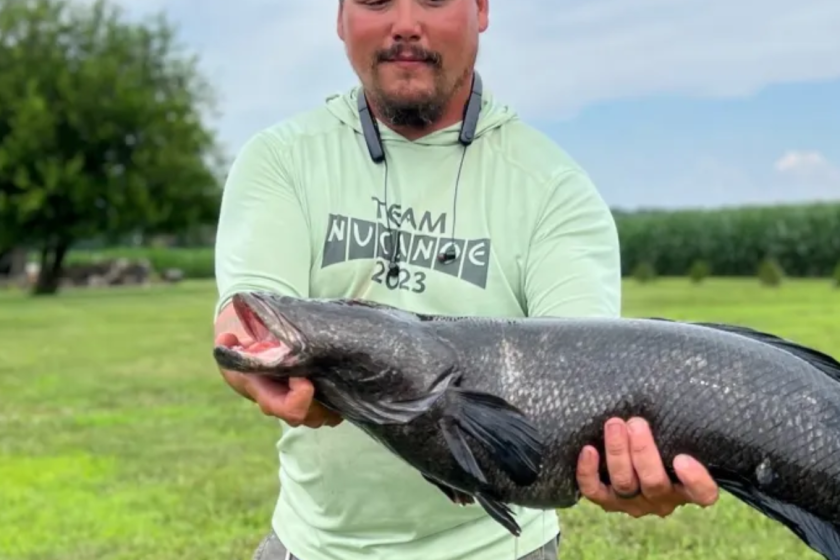
Facebook, Nu Canoe
Just this past summer a new world-record northern snakehead was caught in Maryland. The 21-pound fish surpassed the previous record-holding, 19.9-pound snakehead—which was caught in 2018. Beyond just breaking Maryland's state record, the snakehead also bests the International Game and Fish Association all-tackle world record by more than 1.5 pounds.
Before that, the previous world record northern snakehead was caught less than a decade ago in Virginia. According to the International Game Fish Association, a Spotsylvania County, Virginia, resident caught the world-record, 17-pound, 6-ounce northern snakehead at the junction of the Aquia Creek and the Potomac River in 2013. Before that catch, the previous record-holder was in Japan.
Gift Cards for Tagged Snakeheads
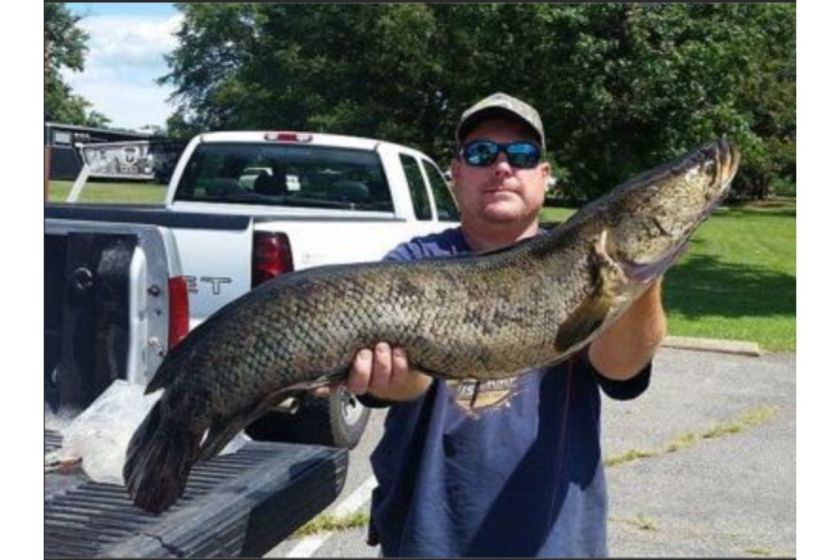
Cumberland Times News
Efforts to encourage the catching and removal of snakeheads are increasing. Last year, the Maryland Department of Natural Resources, in conjunction with the U.S. Fish and Wildlife Service, announced a tagging program established to monitor invasive northern snakeheads in the Chesapeake Bay and Blackwater River. Five hundred northern snakeheads have been tagged with either yellow or blue tags; for each tagged northern snakehead harvested from now until 2024, anglers can receive a gift card. In order to qualify, the harvester must report the tag number and is asked to take a picture of their harvested and tagged northern snakehead. By measuring the number of northern snakehead harvested, the agencies will learn if population benchmarks are being reached—and ultimately helping control the spread of the species.
Snakeheads have been a problem species in Maryland for the past two decades. Harvesting snakeheads helps reduce predation pressure on the state's natural resources. Other local and regional agencies are addressing the snakehead issue as well. The more awareness there is, the less of a problem it may become.
Anglers in the United States are encouraged to kill, report, and even eat any northern snakehead fish they catch.
Targeting Snakeheads

Getty, Joe Raedle
For anglers who like a challenge, snakehead fishing can be a blast. Snakeheads are a tough-fighting freshwater fish, are very aggressive, and strike a topwater lure with explosive force. Look for them along riverbanks and in muddy, shallow bottoms. Bring along some pliers to get these fish off the hook, because those razor-sharp teeth pack a punch.
Releasing snakeheads back into the same body of water they are caught from is not illegal in most states, but transporting live snakeheads is illegal. It is recommended that any snakeheads caught are killed and not released back into the water.
Read More: Golden Shiner: Profiling This Ideal Bass Bait
